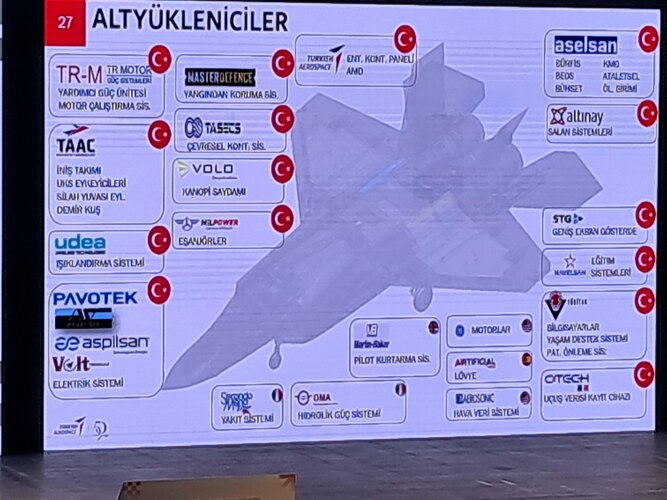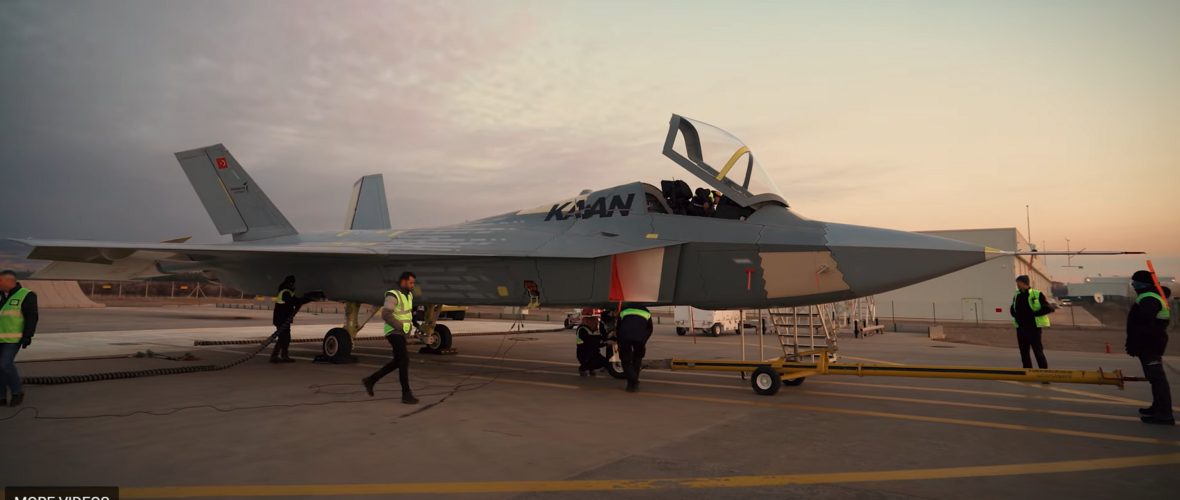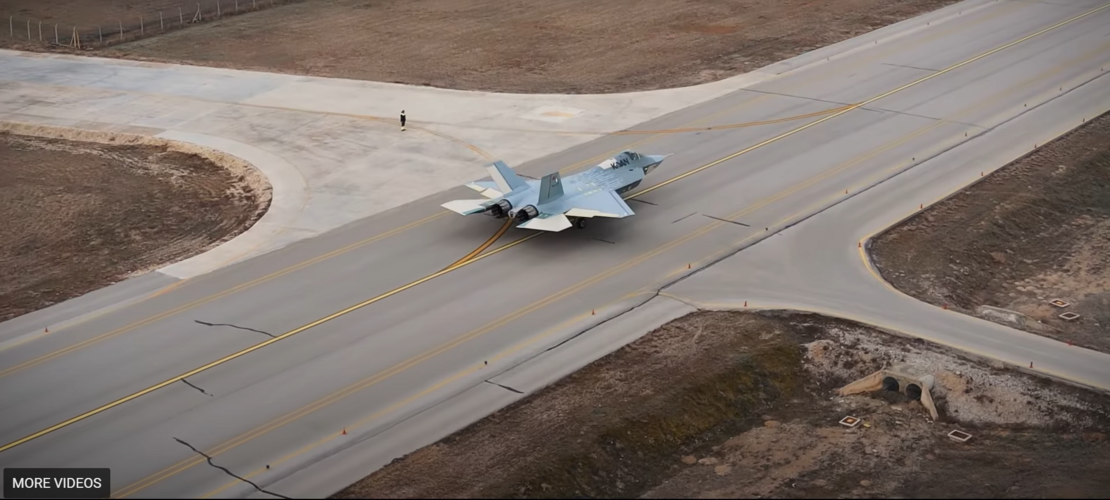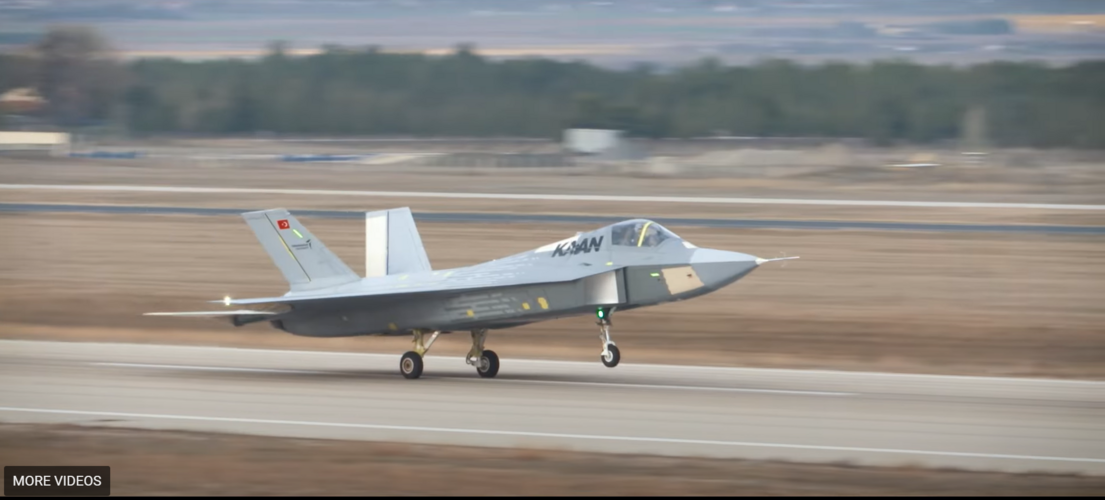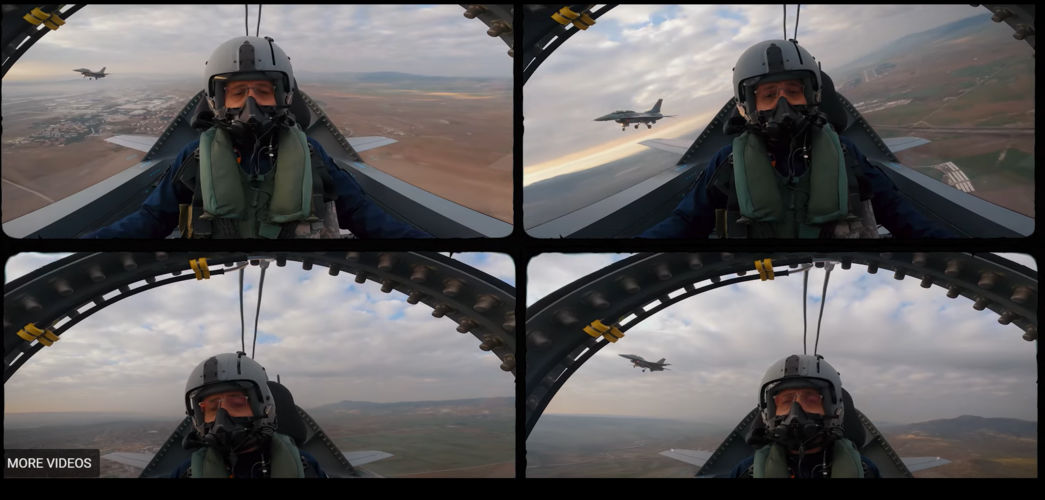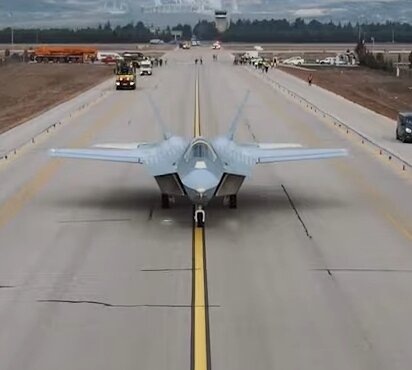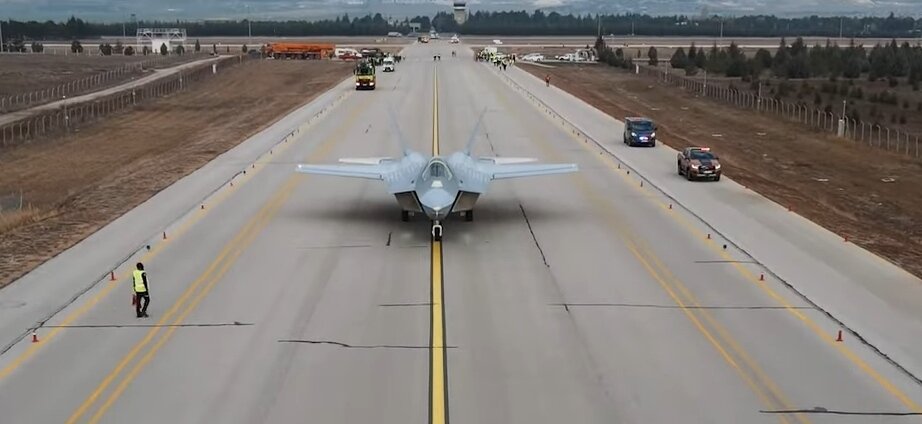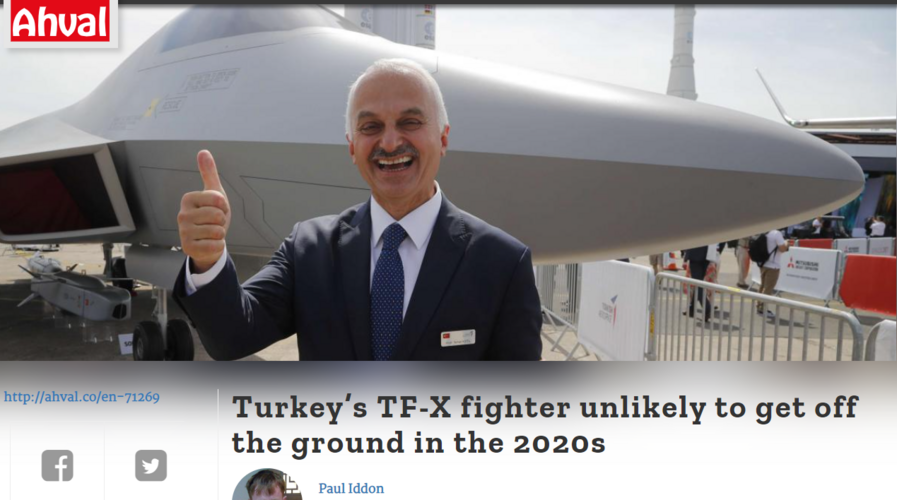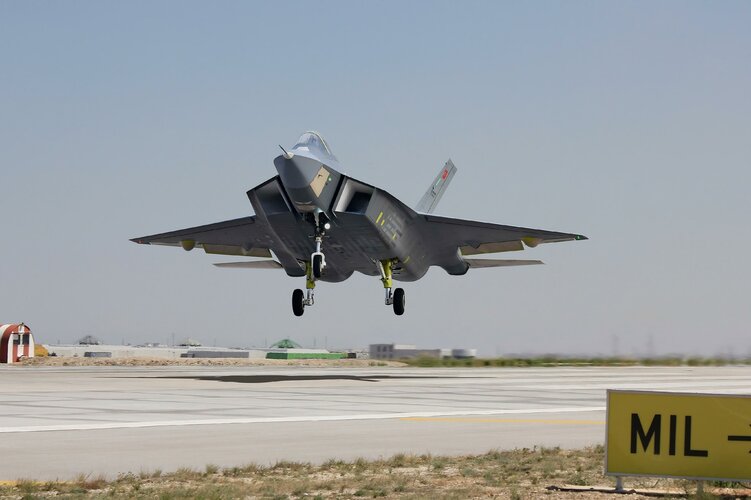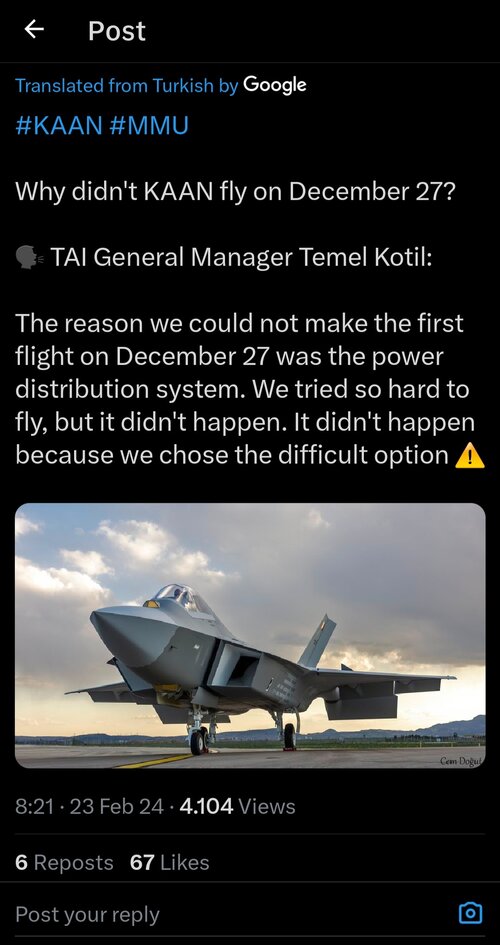Well, just for a moment please ignore your national pride and think: A fighter larger - MUCH, aka THE LARGEST as some want to portray it here with even bigger pride

- than the F-15, F-22 and as such Su-57 and J-20 uses two "old" F110-GE-129 engines with a thrust of 131.2 kN!
I think this says all ... some of you bashed the J-20 as "underpowered" when it used the initial AL-31FN or FM-based engines, still with the current WS-10C delivering allegedly a 145kn of thrust some say it cannot be a true 5th generation fighter since a true super-cruise-capability is "questionable" and now you tell me a much weaker engine with even lesser thrust is sufficient?
Come on ... it's enough for the initial test-phase of fling in circles and basic testing, photo-shooting for PR-stunts but not as a true operational 5th generation fighter. Simply accept it, there is still a long way to go.
Kaan is neither the longest nor the widest 5th generation fighter out there. That belongs to the J-20 and Su-57 respectively.
I wouldn't call the J-20 underpowered and thus not too weak too. It just isn't able to supercruise but that shouldn't be a problem against any fighter not able to supercruise too. The footages of J-20 maneuverability speaks volumes, it isn't any less maneuverable than any 4th generation fighter and I bet it outmaneuvers an F-35 easily whether it's relevant or not in modern aerial combat.
The Kaan neither being the longest, nor the widest thus shouldn't be heavier than other fighters classified as 5th generation. As a matter of fact, I believe extensive use of modern materials in the Kaan, whether it already has or will have, will have a positive impact on its weight.
The heaviest part of a fighter is situated between its radar array and the engine nozzles. Measuring the distance between these points, one can deduce roughly how heavy a fighter will be. These are for the Kaan: 16,92meters, F-22: 15,45meters, J-20: 18,4meters and the Su-57 16,72meters. The F-22 is the densest out there with 1229kg per meter (assuming 19 tons empty weight), followed by the Su-57 (assuming 18,5 tons) with 1106kg per meter and the J-20 (assuming 17,5 tons) with 951kg per meter.
Taking the two fighters closest in size to the Kaan, J-20 for the length and Su-57 for the width, let us take the average of these (1106+951/2=1028kg) and apply it to the Kaan and the result is 17400kg give or take. Add the 65% that's been cut off of the horizontal stabilizers in this measurement, that weigh 235kg each, add another 300kg and another 50-100kg for the radar radome, we arrive at the final result of 17,8 tons rounded up empty weight for the Kaan.
With the Kaan weighing 17,8 tons, a wing area of 78 square meters and a thrust of 58000lbs should perform kinematically better than a Flanker mainly because of 16% more favorable wingloading (228kg/m2 vs 264kg/m2)
Conclusion, Kaan with F110 won't be able to supercruise but is more maneuverable than a 'supermaneuverable' Flanker.
I wouldn't call that too weak.

